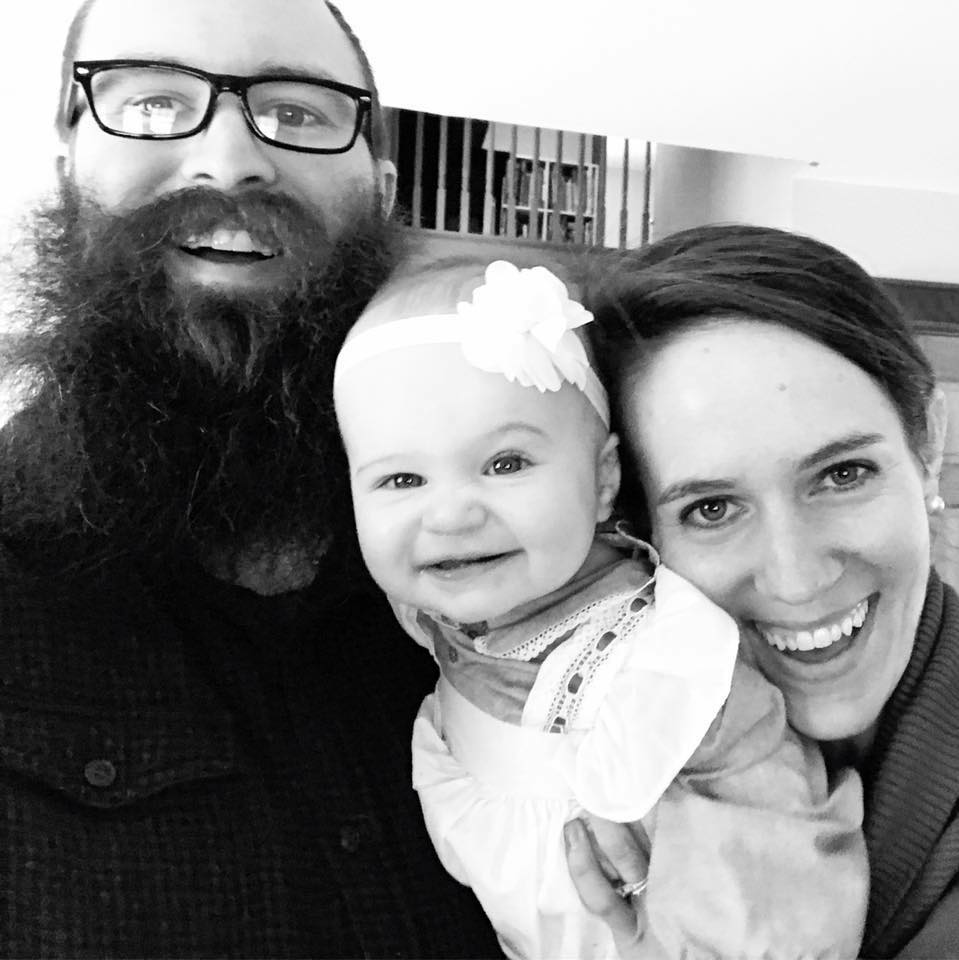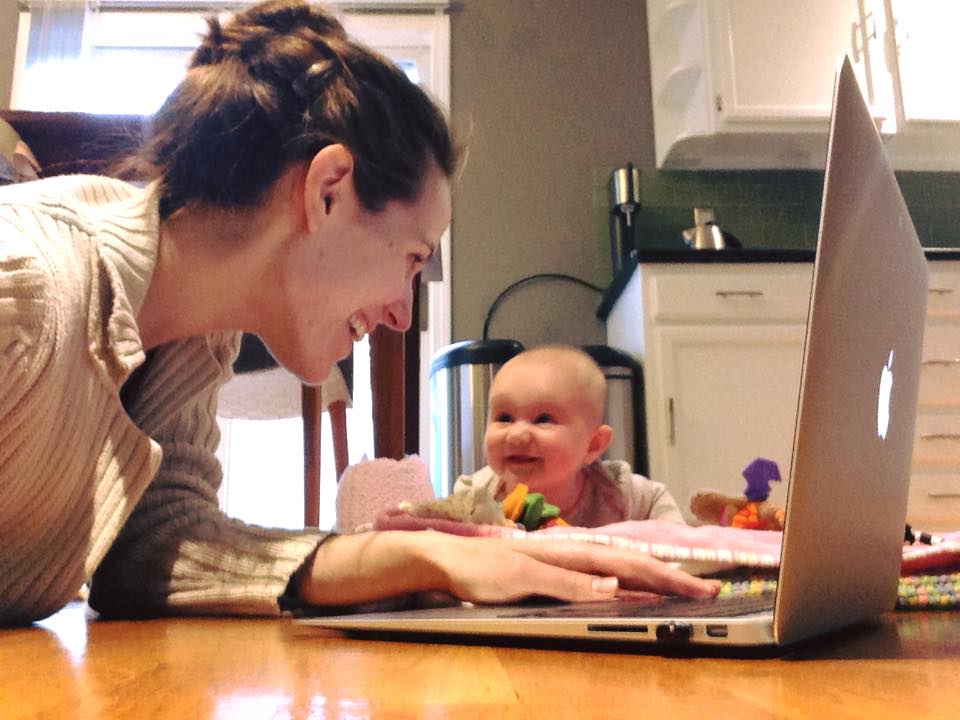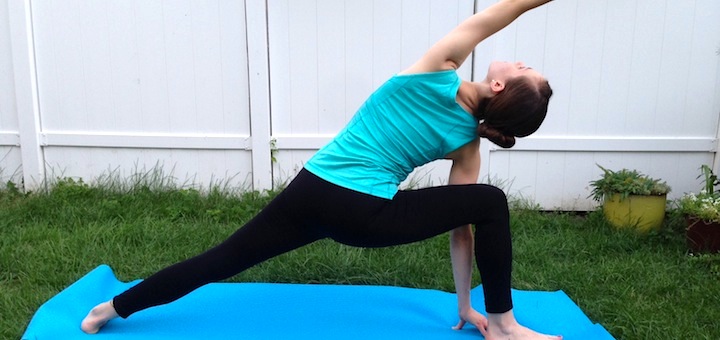Think strategic philanthropy is just for billionaires? Heck no! It’s for everyone who gives away money. We’re all some strategic bosses with our spending, savings, and investments–charitable giving is absolutely no different. Today we’re going to discuss opportunities to maximize your philanthropic impact, support charities you believe in, and ultimately, make wise financial decisions that’ll benefit others–in other words, how to donate like a billionaire! What could be better? Cookies maybe, although I did eat a lot of cookies while writing this, so maybe that brings it full circle?

Philanthropic giving is something Mr. Frugalwoods and I consider central to our philosophy on money and one reason why we feel called to manage our finances so prudently. Plus, before becoming a full-time writer, I worked for ten years as a fundraiser for a number of different nonprofit organizations in Cambridge, MA, New York, NY, and Washington, DC.
Suffice it to say, between raising money for charities and now writing about money for a living, I think about charitable giving a lot! It’s the point on my own personal Venn diagram where my past and current lives intersect. So you could say I’m a tad passionate about this topic…
While it’s easy to give away money just because it feels good or just because you want to, I’m an advocate of strategic philanthropy. Sounds super fancy, no? I do like being fancy (over here with my uncombed hair and hand-me-down maternity clothes… ). But seriously, I like to be thoughtful and considered in all decisions related to my money, and donating to charity is just one more thing I do with my money.
Donor Advised Funds

Many billionaires donate through private foundations and a Donor Advised Fund is a lot like having your very own private foundation, but without all the administrative and tax burdens, and with many of the benefits!
Last year I wrote an extensive overview of Donor Advised Funds in How We Make Meaningful And Tax Efficient Charitable Donations, so I won’t belabor the point. But of course it’s me so I can’t resist giving you just a teensy tiny overview of what they are because, in many ways, my Donor Advised Fund is the cornerstone of my strategic philanthropy.
Donor Advised Funds (abbreviated as DAFs) are a tax-advantaged way to make charitable gifts. Anyone can open a DAF and you can do so online, just like any other element of online banking. You put money into a DAF and then the DAF makes grants (aka gifts) to nonprofits of your choosing either in your name or anonymously. The nonprofits’ experience is essentially the same whether they receive a gift directly from you or from you via your DAF.
Mr. Frugalwoods and I started a Donor Advised Fund last year for a number of reasons:
- Reduce your tax burden. You (the donor) are able to take a tax deduction for the full dollar amount you put into your DAF in the calendar year you decide to put money in your DAF. Then, you’re able to make gifts out of your DAF in perpetuity. There’s no requirement or need to give away all of the money in your DAF in a single year; rather, you can mete your giving out over as many years as you want, which allows you to strategically plan your philanthropy for your lifetime. You can also add more money to your DAF at any time. This is particularly advantageous for anyone experiencing a high tax year that they anticipate will be followed by lower tax years (so, anyone who is retiring or expecting a dramatic reduction in salary in future years).
- Your philanthropic dollars grow tax-free. This is perhaps the coolest part! You can choose for your DAF to be invested in the stock market, where it’ll grow tax-free (unlike in regular investments, where gains are taxed). Hence, you’ll end up with more money overall to donate to charity! Win.
- Avoid capital gains taxes. You can contribute appreciated securities (aka stocks) to a DAF and not pay taxes on any appreciation those stocks have experienced. We donated our oldest stocks (the ones that’d seen the most appreciation) to our DAF, which means the full dollar amount will go to charity instead of to taxes.
-

Hey! I’m a barn in winter! Enable longterm philanthropic planning. The money you contribute to a DAF cannot be used for any purpose other than charitable donations. You can’t transfer money back out of the DAF and you can’t do anything with it other than donate it. So don’t put money into a DAF that you’re going to need! It’s not an investment vehicle, but rather a means of mapping out your longterm charitable giving. For Mr. FW and me, we like having money in a DAF because it ensures we donate to charity every year and that we’re thoughtful about what percentage of our net worth we give away. Since our DAF is invested in low-fee index funds, which is how I recommend investing, we anticipate it will grow over time and yield a sustainable annual rate of withdrawal for charitable giving. We also plan to add more money to our DAF this calendar year.
- Less administrative burden on nonprofits. Having worked as a fundraiser and having processed gifts for many, many, many years, I can tell you that receiving a gift from a DAF is administratively easier on a nonprofit as they’re not required to issue you a tax receipt for your gift. Since the tax deduction is taken at the time you put money into your DAF–not at the time you make a donation–the nonprofit doesn’t bear the burden of issuing you a tax receipt. Additionally, if you’re giving mostly to smaller nonprofits, a DAF allows you to make gifts of appreciated stock to organizations that likely wouldn’t be able to accept these types of gifts otherwise. Accepting gifts of stock directly can be challenging for nonprofits that lack a robust fundraising staff and so utilizing a DAF is a great way to give appreciated stock to smaller institutions.
Tax bill caveat: who knows what will happen with the impending new tax bill, but it seems that the current proposed tax bill might make it unlikely that folks will itemize in the future. Itemizing is the only way to realize a tax break with charitable giving. Given this, it might make sense to fund a DAF this year in order to take the tax advantage now and fund your charitable giving for years to come.
There are some other parameters around Donor Advised Funds that you should be aware of before you open one, all of which I outline in last year’s post on the topic. And, for reference Mr. FW and I have our DAF through Fidelity because their fees are low, they allow you to invest your DAF in low-fee index funds, and we have all of our other accounts through Fidelity, so it’s just easier for us.
Concentrate Your Giving
Now that we’ve established one avenue for how to donate, let’s talk about where to donate. I’m a big fan of concentrated giving, by which I mean donating larger amounts of money to fewer organizations. For example, instead of donating $25 to four different nonprofits, I’m a proponent of donating $100 to one nonprofit. My rationale is that an organization can do a lot more with $100 than they can with $25 and the heart of strategic philanthropy is knowing what you most want to support and not frittering away your donations in small increments. For this reason, I’m also in favor of donating to smaller institutions versus mammoth nonprofits. I have no beef with large nonprofits–the Salvation Armies and United Ways of the world–as they do truly astounding work. However, I am cognizant of what percentage of their total annual operating budget my contribution comprises.

In the case of the United Way, their revenue for last fiscal year was a staggering $3.9 billion, which is awesome! But no dollar amount I’m able to contribute will ever come close to an actionable percentage of this overall total. And yes, I do understand the power of small dollar fundraising and I do know that many small gifts equal a large total. However. What I’ve decided in my personal philanthropy is that I want to concentrate my giving at small, local institutions for the simple fact that they need my money more. For comparison, one of the local organizations Mr. FW and I support every year reported revenue of just over $300,000 for the last fiscal year. That’s a pretty vast departure from $3.93 billion and it’s a dollar amount that I feel my gift can actually impact.
There is no wrong way to donate to charity and there’s absolutely nothing wrong with supporting large nonprofits. It’s a question of having the awareness of what an institution’s overall annual operating costs are and how your support might fit in with that broader dollar amount. If you’re curious about the budgets of your favorite nonprofits, you are in luck because every single 501(c)(3) (that’s the tax code for a tax-exempt nonprofit organization) with gross revenues over $50,000 is required to fill out a Form 990 with the IRS, which lists all of their financial info. Many nonprofits also issue annual reports, which present this information in a lovely, easy-to-read format. Just google around and you’re likely to find what you need for any nonprofit you’re considering making a gift to. I also choose to give locally as my rural community has quite a few needs and I’m happy to keep my dollars within the local economy. This, again, is a personal choice, but it’s something to consider when crafting your own strategic philanthropic plan, which brings me to…
Give ONLY To What Matters Most To You
Sound familiar? It’s a riff on my repeated mantra to “spend money only on what matters most to you.” Well, the exact same mentality applies to charitable giving. Concentrating my giving and giving locally are examples of how Mr. FW and I give to what matters most to us. I think this is the most crucial element of strategic philanthropy. While it sounds obvious to support what you care most about, in the past, my philanthropy was a lot like my pre-frugality spending: unfocused, unregulated, and not always in service of my highest and best priorities.

To facilitate this, Mr. FW and I like to sit down together every year and map out the organizations we feel the most impassioned to support. Otherwise, it’s easy to get sucked into writing a $10 check to every single nonprofit that just so happens to send you a solicitation through the mail. It’s tough because (almost) every nonprofit is doing amazing work, serving an underserved population, turning people’s lives around, and making the world a better place! We should support them all!
But wait. Think about the largest philanthropic donors out there–The Bill and Melinda Gates Foundation, The Rockefeller Foundation, and the like–these people are freaking strategic about their giving. They don’t give to every nonprofit because they can’t. Even billionaires concentrate and focus their giving on the things that matter most to them. You don’t see them doling out $100 to every nonprofit in the country because that would diffuse and minimize their impact. Instead, they give HUGE grants to a smaller number of organizations in order to have outsized impact. They are transformational donors because of their focus and concentration of their resources. You can do the same thing, albeit on a smaller scale. Here again, the smaller the nonprofit, the larger the impact of your financial support.
These foundations operate under the auspices of mission statements that articulate their giving priorities. You too–yes you!!!–can have your own personal giving mission statement. Just like you track your spending and only buy things that truly matter to you, you should take the same approach with your charitable giving. There’s a misconception that strategic philanthropy or Donor Advised Funds or thoughtful giving are only for the billionaires of the world, but that’s like saying that investing in the stock market is only for billionaires (newsflash: it is decidedly not). Folks, we can all take a page out of billionaires’ checkbooks and be focused and intentional in our giving.
In considering where you want your charitable dollars to go, ask yourself:
- What causes are most important to me? (Hint: these are the things that make your blood boil or bring tears to your eyes or otherwise increase your heart rate when you think about them. Identify what matters most to you and then support it with your dollars.)
- What organizations in my community do I see making actionable differences in the lives of those in need? (Hint: you want your gift to be used wisely, so look for organizations with demonstrated patterns of success and impact. Reading a nonprofit’s annual report is a good place to start.)
- What organizations are in the most dire need of my financial support? (Hint: check out the overall budgets of nonprofits you’re considering supporting. Who is in most dire need of additional funding?)
After going through these questions, consider crafting a brief mission statement about what you want your philanthropy to look like.
Give Consistently

In addition to concentrating their giving and focusing on their priorities, billionaires are often what I like to call ‘repeat offenders.’ In other words, they often donate very similar dollar amounts (with considerations for inflation) to the same nonprofits for years, if not decades. The reason for this is that if the donor is happy with the work of the nonprofit, they might as well continue supporting it!
From a strategic standpoint, these recurring donations are LITERAL GOLD for nonprofits as they are how these organizations devise their budgets and plan their programs from year to year. Smaller nonprofits especially become dependent on these repeated donations and can flounder significantly if support is revoked. This isn’t to say you should continue supporting an institution that’s mismanaging donations or not living up to its mission, but rather, that you should determine giving dollar amounts based on what you can reasonably expect to donate year after year. This is yet another reason to concentrate and focus your giving. It’s also another advantage of giving through a DAF–you can map out and predict the return on your DAF’s investments and then determine the tenable rate of withdrawal for contributions every year.
This is why I prefer to give, for example, $5,000 every year to an institution as opposed to $50,000 all in one year and then never give them a gift again. A single gift of $50,000–especially with no accompanying explanation–that’s never going to happen again can wreck havoc on a nonprofit’s ability to plan. Conversely, if a nonprofit knows they can expect your $5,000 every single year, they are able to create longterm plans and goals based on the assumption of this dollar amount.
Parallel to giving to the same organizations is the importance of giving at the same time every year. As a fundraiser, I can tell you that we’d enter spasms of panic when a major donor’s gift was late. We wondered if they’d forgotten or decided not to give or were mad at us. We’d then enter round after round of discussions on how and whether we should check-in with the donor, who should have the conversation, how we could be polite, discreet, but also come away with intel… Don’t do this to nonprofits. Give at the same time every year. It doesn’t really matter when this time is–some folks choose the calendar year end or the fiscal year end or a random month–all that matters is that you do it at the same time every year.
How Should Partners and Families Determine Giving Priorities?

If you have a partner, and especially if you have combined finances, it’s important to make your charitable giving decisions together–just as you make all other financial decisions together. The way Mr. FW and I do this is that we discuss the organizations we’d like to both support and then we each pick an organization that’s a personal priority.
In this way, we make gifts together, but we’re also able to select a nonprofit of our choosing that the other person doesn’t need to feel impassioned about. It’s ok to deviate in your philanthropic goals and in fact, creates a more interesting partnership all around!
Mr. FW and I support just five organizations annually–three of them jointly–and then one organization each on our own. Technically, all of our giving is joint since our accounts are combined and the DAF is in both of our names, but the idea is that we’re each able to choose our own nonprofit to support every year.
As our daughters get older (they’re currently WAY too young for this at age two and due in February… ), we plan to incorporate them into our philanthropy so that they can learn how to craft their own charitable giving plans and choose organizations that matter to them.
Our Giving Slush Fund
While I’m all “strategic philanthropy” and giving through my DAF and whatnot, I also give random dollar amounts to random things at random times of the year just because I want to. Friends’ charity races and Go Fund Me pages and chicken dinner fundraisers for our volunteer fire department and the Angel Tree (Christmas gifts for children in need) at our church are but a few examples of things I donate to out of what I term our “giving slush fund.” And by “giving slush fund,” I mean that I have literally no idea how much money we give to these types of things over the course of the year and I don’t care either.
Often these are events or fundraisers that I cannot donate to using my DAF since money from a DAF cannot be contributed towards anything you receive a ‘good or service’ in return for. So, the chicken dinner, in which I received a delicious chicken dinner, cannot be donated to through my DAF since the dinner is considered by the IRS to be a ‘good or service.’ And I can’t exactly use my DAF to buy toys and clothes for my Christmas Angel Tree kid, so, I don’t sweat it. While I’m all for strategically mapping out the bulk of our charitable gifts, we don’t quibble over these more nominal amounts. I think it’s important to allow for these one-off giving opportunities that crop up every year and to simply contribute an amount that makes sense for you, while knowing that the majority of your philanthropy takes place in a more organized, strategic fashion.
Should I Give Away Money If I’m In Debt?

This is a question I get from readers quite often, so I know it’s one that weighs heavily on many of your minds. I need to preface my advice with the caveat that since Mr. FW and I have never been in debt, I don’t speak from personal experience. However, I do speak as someone who helps a great many people with their finances and who raised money for nonprofits for a decade.
First of all, what do I mean by debt? I mean non-mortgage, high-interest rate debt. If you’re cruising along with a low-interest rate mortgage, I’m not talking about you. I’m talking about high-interest rate student loan or car or consumer debt. This is debt you both want and NEED to pay down. Every month that you don’t pay off this debt, your interest on that debt is growing and you’re owning your lender ever larger amounts of money. It’s my opinion that you need to pay this debt off. As fast as possible. And that might mean forgoing making charitable gifts until your debt is gone. By donating money while in debt, you’re essentially digging yourself deeper and deeper into debt and doing a great disservice to your longterm financial health and your longterm ability to contribute to charities.
I understand that this is likely a controversial stance and everyone has to make a decision that feels right to them, but, it doesn’t make sense (from a mathematical or fiscal prudence standpoint) to donate money to other people if you yourself lack an emergency fund and the ability to care for your own family in the event of a crisis. If you feel you must donate money while in debt, consider scaling back the total amount you give away until after you’re out of debt.

I know that a major sticking point for many folks is the calling they have to tithe to their religious institutions. And I get it. I donate to my church every year and they need the money! But it’s a slippery slope to give away money you don’t have and when you’re in debt, it’s really not your money you’re giving away. You’re choosing to slide further and further into debt in order to donate. Get yourself out of debt and have charitable giving as a goal for your debt-free lifestyle. Use it as motivation to pay down your debt even faster. Rather than looking forward to an ultimately empty and meaningless shopping spree post-debt, look forward to writing a fat check to your favorite charity. In my opinion, it’s a ‘put on your own oxygen mask first’ situation and you are the person who needs their oxygen mask. You need to get your own financial house in order before you can start helping out other people with their houses. Most charities, from a strategic standpoint, would prefer that you’re a responsible, continuous donor throughout your lifetime as opposed to a sporadic, one-time donor who is giving at the potential peril of your own well-being (see my above section ‘Give Consistently’).
The good news is that there are MANY ways to give back to nonprofits other than financially. If you are in debt, or struggling to get an emergency fund together, or otherwise not financially solvent enough to give away money–in which there is ZERO shame–find another way to contribute. One solution is to make…
Gifts Of Time And Service
What do nonprofits need other than money? Your time! They need you to volunteer! They need you to stuff envelopes, edit newsletters, babysit babies during church (thank GOD for these people!!!), bake cookies, bring dinners to seniors, shovel snow off the front steps, fix the boiler, dig a trench to fix the insulation problems with a water well (can you tell some of these examples stem from personal experience 😉 ?), change the lightbulbs… the list of needs is literally endless, especially for small, local nonprofits. So don’t feel discouraged or depressed if you can’t contribute money this year (or next year or the next year).

Similar to giving money, the best way to give of your time and service is to focus your efforts. As a person who used to help manage volunteers, I can tell you that nonprofits incur a not insignificant cost when they manage and train volunteers. For example, say you have five hours a week to volunteer. If you volunteer for one hour at five different nonprofits, you’re dramatically diluting your impact and, I’m sorry to say, are likely a net negative for the nonprofits (given the costs and staff time required to train/manage you). Conversely, if you volunteer five hours a week at the same nonprofit, you’re likely to produce a net positive for them. You can do a TON of work in five hours a week and, if a nonprofit knows they can count on you week after week, you’re as good as a part-time employee to them. You are having a strategic and meaningful impact on their operations.
In selecting a volunteer opportunity, do what you can and sign-up for a volunteer task suited to your current status in life. As a parent of a young child (with another on the way), my own business (of which Mr. FW and I are the sole ’employees’), and a book coming out in March, my time is what you might charitably called stretched at the moment. Mr. FW serves on the boards of two different local nonprofits and we work hard to accommodate the late-evening meetings that this entails. We decided that to have me also going to late-evening meetings is simply not tenable for our family right now. Rather than wring my hands about this, I’ve discovered that I can do volunteer work from home on my computer! Editing newsletters, creating fliers and brochures, etc–these are my specialty right now as I can do them with Babywoods in my lap (or snuggled in her bed). Plus, these are all things I already know how to do. Find something that you can do, that fits with your schedule and skill set, and then do it consistently.
Make A Charitable Giving Plan That Works For You
As with all things financial, there’s no one right answer for how to donate money, but what I do advise is that you implement a rationale and a strategy around what you do. Don’t be writing random checks to random organizations at random times that you don’t even know the mission statement or annual operating budget of. Be focused and intentional. Choose to donate specific amounts of money to specific nonprofits performing work that’s meaningful to you personally and to your community.

Perhaps that means concentrating your money locally. Perhaps it means concentrating your money on disaster zones globally. Perhaps it means opening a Donor Advised Fund. Perhaps it means simply creating a spreadsheet listing out how much money you have to give away this year and all of the organizations you want to give to. Perhaps it means making a conscious decision to not give away money this year and to instead pay down your debt while upping your volunteer game and getting involved in a hands-on sort of way. Being strategic about philanthropy is not just for the billionaires of the world, it’s for everyone who gives away money. Do what works for you, do what matters to you, but be thoughtful and strategic about it–you will not regret it and you’ll feel so good about supporting institutions for which you care deeply.
P.S. I WROTE A BOOK! I’m a little bit excited, can you tell?!? My book is now available to be pre-ordered, for which I will mail you a signed bookplate. Check out this post for all the details.
P.P.S. We’re taking my Uber Frugal Month Challenge as a group during the month of January 2018! To save more money than you ever thought possible and transform your relationship with your finances, sign-up to join us. Also note that the Uber Frugal Month will go on hiatus after January, so now’s your chance!








I really like the approach of focusing on more impactful giving “chunks” to fewer organizations vs smaller amounts to many organizations. My husband worked for a non-profit for 10 years and I know they relied heavily on recurring donors and (I’m assuming) larger donations when possible. After seeing the dedication and willingness of so many staff members to take lower salaries in order to further their mission, we find great joy in being able to support them in our own way each year.
Our charitable plan typically includes a few targeted giving (some recurring monthly, some one time annually). My husband and I are particularily drawn to causes that are more tangible or local to us… organizations doing good in our community or organizations we are tied to in some way. We also keep a small fund for “opportunity giving”. For example, we recently found out several of our aquaintances experienced devastating losses in the southern California fires. Due to our “opportunity giving fund”, we were able to help them monetarily despite living 2,000 miles away.
And we recently both signed up to be part of different Service Ministeries at our church… reading during church for me and preparing food for funeral lunches for my husband. Neither are huge time committments but they are ways we can further integrate ourselves into our community and give back in a small way.
Have a Merry Christmas, Frugalwood family! Thank you for the inspritation, encouragement, and beauty you add to our life (and the lives of many readers).
Awesome post and a great rundown of charitable strategies! Now that I’m semi-retired my preference is to start donating more of my time and service. Not only do charities need this, it also opens up tremendous networking opportunities and creates stronger community bonds.
Happy Holidays Frugalwoods!
Thanks for sharing your insider story! As someone who has never worked in a nonprofit, I often wonder what the best ways to give are.
We were able to donate money, but focused more on giving of our time when we were in debt. We made that choice because our debt was mostly student loan, and less than one year salary. If our debt was a dark cloud hanging over us, I would have passed on donating during that period of our lives.
Now that we are debt free (other than mortgage) and saving towards financial independence, we are able to give more generously. While some people argue you should wait to give until you reach FIRE to donate that’s just sounds crazy to me! If I don’t work it into my money mindset now, I don’t think I’d be able to change course down the road.
Wow this is such a helpful post! Mr. FAF and I usually give to our family, but we don’t consider it charity. It’s both a sense of responsibility and returning favors in our family.
After Mr. FAF started working, we have given to some organizations that we believe in such as Wikipedia. I will look into DAF to see if the organizations we are interested in are eligible to receive funding from DAF. Thank you for sharing!
Absolutely excellent article. I wish we had DAF’s in South Africa, but sadly we don’t. Nevertheless, it is completely possible to maximise tax efficiency and to donate somewhat strategically, so the point is well made. I also firmly and completely believe in the ”own oxygen mask first” priority. You, your minor children and dependents who are disabled / unable (pets included) are number one, front and centre. The next level is extended family and very close friends, then it’s the local community, then the bigger community… and so on. No one should be burdened with YOUR retirement disaster. Student loans, though heavy, are a thing many access and pay off. Retirement loans, not so much. It is a burden on your younger generation to have given all the money away, even with the very best of intentions, be it to pricey tertiary education, fancy holidays, whatever. Feather your nest sufficiently that you are as independent as you can be, THEN by all means, give and give and do so in all good conscience.
I also agree about the small incidental stuff, like a chicken dinner or a hot dog to raise funds for the local neighbourhood watch, the tin collection at school, the money-in-the-tin. That can always be made room for, but the big giving comes when your financial house is in decent order and on an even keel, not before. It feels horrible, but it’s the answer. My dad always said that and he was a very generous, kind and prudent man.
I also support focusing on one volunteer effort! I used to volunteer at a hospital back in Michigan and they made it easy (go whenever you want between 8am and 8pm, get a free lunch/dinner if you work 4 hours) but they asked us to commit to the same area and asked us to come weekly. The training for each area was more involved, which is more time from other volunteers and staff. Benefits were that the doctors and nurses would get to know you. If you weren’t coming regularly, it wasn’t helpful in the long term since you’d miss training, notices or announcements. If you can only commit time once a month or sporadically, be up front about it. They may have a special easy one-time job for you or may ask that you wait to come in.
Wonderful points! Thank you for sharing this. I think it’s easy to forget how much time and money goes into training volunteers. Kudos to you for being such a consistent volunteer :)!
I love it any way someone can give the better. I have a Charity of the Month on my blog and encourage everyone to donate there. I know this time of the year is considered donation season. But, we should all be encouraged to donate money all year long. There are MANY very deserving charities that need help all year long.
We give an annual $450 dollars every December to our doggie rescue. Our pup Grace is an important love in our lives — we started the adoption process with her in December. 2 years ago we PayPal $450 to her adoption organization and waited for her to get better so we could meet her. $450 was nothing even though her care and surgery costs probably were in the thousands for the rescue!!
We made a habit of giving the same amount every year as a symbol of gratitude for her. Hubby says: “it’s like every year we get a Grace again!”
Also — use Smile amazon and Amazon will give a very small proceed of your order total to charity at no cost to you. I have mine set to SPCA because…doggies are the best peoples 🙂
I hate to say “always” but if anyone has debt with a higher interest than 3-4% then they should pay back the debt first before giving to charities.
I have been considering opening a DAF, so this is timely for me. In last year’s post on the subject, you covered the administrative fees of DAFs – choosing Fidelity for convenience is fine, but it may also be a reasonable choice based on the $100 or .60% (whichever is greater). For smaller giving, those people just beginning to work towards FI and who do not need the tax advantages on appreciated assets, it may not choose to be the wisest way to use of their charitable money. If the market is stagnant or tanks, your money will have gone much farther without spending the $100 fee each year. Of course if the market does well, then the $100 fee is worth it… but, for those with small amounts to give, $100/year right off the bat is a lot.
I thought this chart was a good compilation of DAF fees (although I did not check for accuracy): https://www.philanthropy.com/article/What-Donor-Advised-Funds/156495
Also, Fidelity had a good basic analysis of what the fees on a DAF could look like… https://www.fidelitycharitable.org/giving-account/what-it-costs.shtml
Thanks, and Happy Holidays!
All good points and yes, DAFs are not always the best route–it’s truly advantageous when you have a high tax year that’s likely to be followed by lower tax years. And Fidelity’s low fees were one of the reasons why we chose to open a DAF through them. I definitely recommend researching different DAF administrators to select the best one for you.
Great post, especially the point of giving ONLY to what matter for you most. This is a crucial principle and requires a little bit of work on our side as well (vetting process).
I would add another point: Give CHEERFULY
As a christian I always remember this verse from the Bible
2Co 9:7 (KJV) Every man according as he purposeth in his heart, so let him give; not grudgingly, or of necessity: for God loveth a cheerful giver.
Give cheerfully.
Our charitable gifting plan is based on our pledge to donate 10% of our income to fight extrem poverty. Something we can do easily due to frugal living.
We chose charities based on the evaluation of givewell.org.
As we’re all about using our money strategically, I really recommend checking out charities recommended by givewell.org. More info on using evidence and careful analysis regarding where to have the biggest impact with your donations see: https://www.effectivealtruism.org or William MacAskill: Doing good better.
Love this strategy, and love givewell.org!
What a thoughtful and insightful post! It is easy to read that you really know a lot about charities from the inside.
I think I will definitely have to take a harder look at my charities from next year. Focused and intentional, indeed!
Beside our regular gifts to charities we keep a certain amount of cash on hand for local crisis like a family home burned, tornado damage etc. In these cases we will not get a tax write off but are able to get necessities to those needing them asap. One word of caution: when sharing about one’s favorite charity don’t feel superior to those who just don’t “feel” what you feel. I had a dear friend who some labeled selfish but whom I knew was giving huge sums away quietly. A conscience is a personal thing…don’t force yours into someone else’s heart…no one is a good enough surgeon for that.
We finally set up our DAF this year and funded a few years of giving to take advantage of the tax deduction in case the higher standard deduction makes removes the write off benefit in the future.
Like you and Mr. Frugalwoods, we like to focus our giving. My husband is very active with Boston Aquarium that does a lot of rescue, rehabilitation, and research work. We donate in size there every year. I am passionate about education reform, so donate to City Year Boston every year. City Year is an amazing foundation with excellent tracking of impact and was started right here in Boston! We really like organizations where we can provide some hands on help as well as monetary donations. That way we can get to know the organization and management process. Then we keep a slush fund for random causes, disaster relief, and other one off needs.
My other favorite thing to do, which was a suggestion from my good friend who started the business WeWool, is to keep a few pairs of new warm socks in our car and a pair or two in our son’s diaper bag for when we see homeless people in the fall and winter. Socks are usually the most requested item at homeless shelters and clean, warm socks really makes people smile.
There are so many worthy causes out there, which is why giving intentionally as you mention is so important. You can’t help everyone, but even with small dollars you can help someone!
As someone who wants to be a philanthropist when she grows up (and reaches FI), I really get a lot out of these articles you write each year about charitable giving. There are so many options to consider, and you make great points! Thanks again for another wonderful post. 🙂
Hello! Just wanted to mention that your december posts don’t seem to be making their way to the homepage of your site. I looked at the November archive, then replaced “12” for the “11” in the URL to get the list. Thought you might want to know – excited to catch up!
Weird! They show up on the homepage for me!
This has been happening for me, too. Throughout November, I saw no new posts (I thought you were due in Nov and figured you had your baby, not realizing BW1 has a Nov birthday that I was thinking of), then I found the November page and BAM! there were all the posts! I can see on the left the monthly archive and it says there is only 1 article for December, but when I click on the month, all 4 pop up. Not sure if Rachel & I are having computer issues? I figured I was just going crazy. :/
How weird! My tech guy (aka Mr. FW) and I can’t find any issues and the articles are showing up fine for us, so I’m not sure! Computer ghosts perhaps ;). Glad you found the articles! You can also sign-up for my email list if you want to make sure and receive a notification of all of my new posts. Thanks for letting me know!
I’ve had the same issue I think. I get the email notifications, so I knew there were new posts, but when I’d come over here to read them, they were not on the front/home page. I didn’t think of trying to go through the archives like the reader above. But I did notice they would appear after a few more days. Is there supposed to be a lag?
I’ve noticed this for the last few months. I get the email, but the post isn’t on the home page for several more days.
Also possibly worth noting I am using my Android phone for all of this. I don’t know if it’s an issue elsewhere.
Thank you for sharing this super helpful information! A few questions for you:
– With your DAF, in the other article it says that you usually give one lump-sum each year at roughly the same time. Is it possible for the DAF to donate on a monthly basis also? Are there any limits on where (what organizations) those donations can be directed?
– For your “slush fund”, where do you keep this? Just as part of your checking account/regular expenses?
– How much do you usually put in your DAF? More than the amount you want to donate so it grows interest? Less? Monthly contributions after the initial amount to open the account?
Thank you and love your blog! XO
Great questions!
-Check on DAF administration requirements with wherever you open your DAF (ours is through Fidelity) as different DAF administrators have different rules regarding making donations.
-All of our money is kept together in the same accounts: cash, low-fee index funds, and 401ks. I’m a minimalist in all things :)! You can read more about our simplified money management system in this post: Our Low Cost, No Fuss, DIY Money Management System.
-Our philosophy was to fund our DAF with a significant amount of money as it represents what we intend to give away to charity over the course of our lifetime. That being said, we will likely add more to it over time. The money in a DAF is invested and so it makes sense to put a bunch in and then have it realize appreciation over time (just as with any other investment). Most DAFs also require a minimum amount to open the DAF and then also have minimum disbursement requirements and in some cases minimum balance requirements, but again, this varies with each DAF administrator, so check with the brokerage you plan to use. One of the biggest advantages with opening a DAF is the ability to reduce your tax burden for that calendar year, so it often makes sense to put a big chunk in during what will be a high-tax year for you.
Hope this helps :)!
Timely and thoughtful post. Thank you.
WC said “We make a living by what we get, but we make a life by what we give.”
I hadn’t heard of a DAF. We are unsure if we will be itemizing next year due to the new tax code, so this seemed like a good idea for this year..
However, the fees seemed high. Do you have a handle on what dollar amount invested is “worth it” to be paying a $100 or 0.06% annual fee just to have the account?
We usually use Vanguard, but they have a $25,000 minimum to open a DAF. We’ probably be somewhere between Fidelity (and TIAA- who we also use) $5,000 minimum and Vanguards.
Well, I want to thank you for this post. We pulled the trigger and opened a vanguard DAF. Would have preferred TIAA, but it was too late to fund with stock.
I use a DAF for the anonymity. I like to be anonymous anyway, plus this way the charities don’t waste a bunch of money begging you for more money. I used to contribute through my employer, but then I realized they had pretty high fees. Then I switched to JustGive (not a DAF), but they are no more. So now I’m with Fidelity.
Great information, and also very good timing. Giving is a joy, especially in this holiday season. I totally agree on “Give ONLY To What Matters Most To You”. Have a great holiday!
Unfortunately some of this post won’t apply to Canadians. I made it a goal last year to donate $25.00 per month to a charity – this is included as part of my budget. I pick a different charity each month and focus on ones where my amount can impact the most. I also google the charity report card which outlines how much money is put towards the charity and how much towards administrative costs. This is how I chose to donate to the Terry Fox Foundation versus The Cancer Society, the Terry Fox foundation donates 80% of their funds to the cause.
Excellent thought provoking post. In tracking our spending much more closely this year, I’ve been giving a lot more, but in a very inconsistent and unmanaged way. I’m now going to go into 2018 with a plan for our giving just like we do with our spending.
My goal for some point in the future when I reach much more solid financial footing is to open a DAF. I’m also looking forward having much more free time not eaten up by a 9-5 at some point in the future, and volunteering/sharing my time and energy are also on the list. I’ve got a lot of ideas of things I want to do with that time.
As it is, my current giving strategy is all over the place, with a bunch of $25 donations here and there to various organizations instead of larger donations to fewer places. I’m definitely going to be reconsidering that going forward.
After many horrostories about mismanagement and seeing it in person with Harvey and the red cross, I have become distrustful of many of the larger NGOs. I suspect many of the smaller local community organizations that I trust more to do their homework wont go through with getting the kind of official certification which might mean that I wouldnt be able to donate to them through a DAF? Any thoughts on this?
You can donate to any registered 501(c)(3) through a DAF and, in my experience, all nonprofits of merit are registered with the IRS as 501(c)(3)s, even very small organizations. You can also check-in with your DAF administrator before opening an account to make sure.
Thank you! I love your attitude toward giving, it is inspiring. I would love to learn more about DAFs and whether I can use it to contributions to my church. Thanks for helping me consider ways I can be more intentional about my giving.
Long time reader,first time I felt inclined to comment. I’ve had this dilemma and discussion with my SO many times over the years. He always had the sentiment that you should give locally and/or support what you’re passionate about. Devil’s advocate that I am (and because I love arguing him), I questioned that. What if the greatest needs are with the people who have the least amount of resources or happen to be overlooked or aren’t as news worthy. I ask myself (and you readers), do I have an obligation to look outside my own needs, my own fairly priveledged upbringing and the charities that might inspire and donate to charities, institutions,and causes that might never be on my radar? Something is better we than nothing obviously, but I’ve always wondered about this. Full disclosure I’m a white middle class woman and have centered my giving on planned Parenthood and environmental issues/climbing access. But I think there may be marginalized people/causes elsewhere that are not newsworthy, don’t have strong advocates and need my support more than the organizations I choose because I’m choosing what I know as a middle class Western person. Thoughts?
Against Malaria Foundation at https://www.againstmalaria.com/donate.aspx (save kids’ lives, costs less than $3000 per life saved, every dollar produces $12 of economic benefits, *tiny* overhead- 99.4% of funds go to programs)
Schistosomiasis Control Initiative at http://www.imperial.ac.uk/schistosomiasis-control-initiative/donate/ (treat kids for parasites, preventing developmental and learning problems and increasing their earnings when they’re grown, costs only $1.13 per kid per year, every dollar spent produces $12 of economic benefits, 90% of donations go to programs)
They may not send out cute pictures, but these charities have a huge impact on kids. Vetted by givewell.org and several other charity evaluators.
I agree with you; I think most people agree with your husband. In this situation, I think it makes sense for you to split your contributions so that some go to each.
FYI, I’m currently contributed to:
* Give Directly – they give grants to very poor people to do whatever they want with. These are not loans they have to pay back, so of course there is no interest.
* Rainforest Foundation – I started with the Nature Conservancy because they actually buy environmentally important land instead of begging the government to do something. Then I partly switched to Conservation International because they have lower overhead costs. Then I learned that at least the former one also works with current landowners who are doing a good job, which is much cheaper than buying land. Then I read that Rainforest Foundation is all about that, and later that protecting rainforests helps the most to fight climate change.
* RAICES – I thought the worst thing is pain, so I tried to find organizations that researched fighting pain and didn’t really like my choices. So then I went with Amnesty International for their anti-torture work. But after reading about trouble at the border, I switched to RAICES which fights against torture of immigrants and also for other rights
* Planned Parenthood International – Ha, like you! I decided that making it easier for people who want birth control to get it helps fight poverty and, by leading to fewer humans, helps fight climate change.
Your last two articles are not posting on the main page!
We manage giving by having a set amount we give to charity each month. At our monthly financial check-in (the last weekend of the month), we pick a charity we want to donate our money too. We do it no matter what took place in the previous month (budget wise). Sometimes it is for a local charity, sometimes a national one. In addition to this we also contribute – in memory of loved ones, natural disasters, something that moves us. We are a single income family, and it always seems to work out – even thought sometimes it feels tight, or financially unwise. Sometimes the more we give, the more we realize we have.
Hi Mrs. Frugalwoods – for your information, your recent posts aren’t coming up on the mobile version of your site, at least not on my Android phone.
Thanks for this post! My mother gives small amounts to a ton of different charities and has created a significant junk mail burden for herself. I’m going to sit down and review your post with her, since this really makes a great case for what I’ve been telling her (give a larger amount of money to just a select handful of charities).
Your posts about DAFs and charitable giving are so helpful. Thank you!
I want to share my personal experience of the benefits of giving while in debt. We finished grad school as a family of four with six figures of student loan debt at the height of the recession. It was an amount of money that seemed easily paid back in the economy we started school in and totally impossible in the economy we graduated into. My husband and I were both raised to pay tithing and have been doing it since we were young children. We have always believed that we couldn’t afford NOT to pay tithing, espcially in rough financial times. The practice helps us to pay attention to our money each month, and reminds us of the abundant 90% we are left with. It helps remind us that our bank balance is not our most important blessing, and teaches us gratitude for family, friends, health, and faith. It also reminds us that we can’t rely solely on our own efforts but that we can rely on God.
Like you said, Mrs. Frugalwoods, the math doesn’t make sense but it has made sense for us in every other way. We did forego some other giving during the lean years (like to our Alma Maters) but are hoping to make up for that in years to come.
I find donating important enough to do even though I still have debt. I wouldn’t advise going into debt in order to donate, however!
Generosity is an important part of my financial philosophy, and my wife is slowly getting on board. One important part of my donation philosophy is sustainability – that is, “teach a man to fish” rather than “give a man a fish.” This isn’t to undermine the importance of non-sustainable charity – sometimes people just need a meal.
Great article. Our family gives 10% of our income to our Church (tithe). We also twice a year do a “sweep” of the house and donate clothes, toys, furniture etc that have not been used in a while. It’s something the kids actually look forward to because they get to justify why something they have not used should be kept. On top of that, this year, in order to get our kids involved in giving, we are setting aside money that the entire family will donate to an agreed upon charity – in for of goods we will purchase with the money and deliver.
I don’t have a plan, we just give, when we find a cause worth giving. In the past we donated to a lady who saves dogs from the streets and then relocates to good families and to some kids with life threatening illnesses.
Thanks, this was an incredibly helpful post. I’ve just started giving more in recent years and you’ve given me some great advice. I’m definitely going to open a DAF and I’m for sure going to give more to few organizations going forward.
Smart giving is key. There are a lot of charities out there that spend a lot on pomp and circumstance. It’s good to take a closer look at where donations actually go. The tax benefits in my mind are a second thought.
Oh, I like your questions to help you decide who to donate to. I spent a long time figuring this out for myself and came up with slightly different questions.
1) What issues do I think are the most important? Ugh, they are all important! Finally I picked poverty, the environment, and anti-pain (which evolved into anti-pain/torture and pro civil rights).
2) How should these issues best be handled? I prefer prevention over fixes and actual fixes over sharing information.
3) What charitable organizations do those things most efficiently. Who knows? I keep changing my choices as a I learn more.
This means I don’t support local charities (except for donating blood and for my self-centered ones like public TV) and I don’t contribute to the disaster du jour (but lots of other people do, so I don’t feel too bad). I also don’t focus on issues of importance to me (like diseases that run in my family), because it seems like saving the earth and fighting poverty is more important that finding cures for diseases of old-age. Fortunately it’s okay if I’m wrong because if everyone supports what they most want to support, then it seems like all the important issues will get supported by someone.
I’ve read that most people are most motivated when giving locally, to charities where they can see what is happening and maybe even have a voice. I, however, am not like that (like LG said above). I absolutely do not want to read about the horrifying poverty that I am slightly helping to relieve, or the massive environmental destruction that I am helping to slow down slightly.
I’m not good with the consistency. I do donate monthly, but none of my charities can count on my contributions from year to year. I do split up my contributions among multiple charities (currently 4), and even with donating 10% of my net income, that doesn’t add up to much, so I don’t feel too guilty about that.
Another question I struggled with was how much to donate. Part of me says that as long as there are people worse-off than me, I should be donating more, until I am just barely okay. And part of me says I want to keep all my money for myself. So I decided to do something in between but what? So I looked up the average donation percentage–it’s something quite low like 2-3%. And I looked at religions–10% for Christianity and Judaism. I think it’s even more for Islam. And I decided that more than average is good enough. So I donate 10% of my net income for “important” issues plus a little extra for self-centered issues. I worked my way up from 3%. For a couple of years when I had a really good income, it went up to 13%, but those days are over!
As for non-financial donations, I absolutely do not want to help with what I consider to be the most important issues–they are too depressing and I don’t have the skills. Instead, I focus on what I’m actually good at, again hoping that other people are good at other things.
Since the original post and most of the subsequent replies were in 2017/2018 before the new tax rules came into effect, would someone be able to speak knowledgeably about how those changes impacted the benefits of leveraging a DAF? I continued to donate as normal (usually about 12% of my take home) after the tax changes, and continued to itemize, but I honestly don’t know how to assess the impact of the tax rules to my own tax situation. I continued to donate to the missions important to me because they were important (like many above, tithing to my church, and some others) and not because of tax benefits, but it sure doesn’t hurt to do things smartly when possible!
I also really appreciate the points about donating for greater impact rather than every charity whose mission resonates with you. I’ve starting listing out the organizations that matter to me, and noting which ones I can support via money, time, goods, or all of the above, in order to better focus my resources. I checked out GiveWell.org, but would also appreciate anyone’s advice on where I can effectively research the organizations I currently support. When reading an organization’s annual report, I’m not entirely clear on what to look for to determine whether my relatively small amount will have a measurable impact. Welcome insight from anyone who can tell me more!